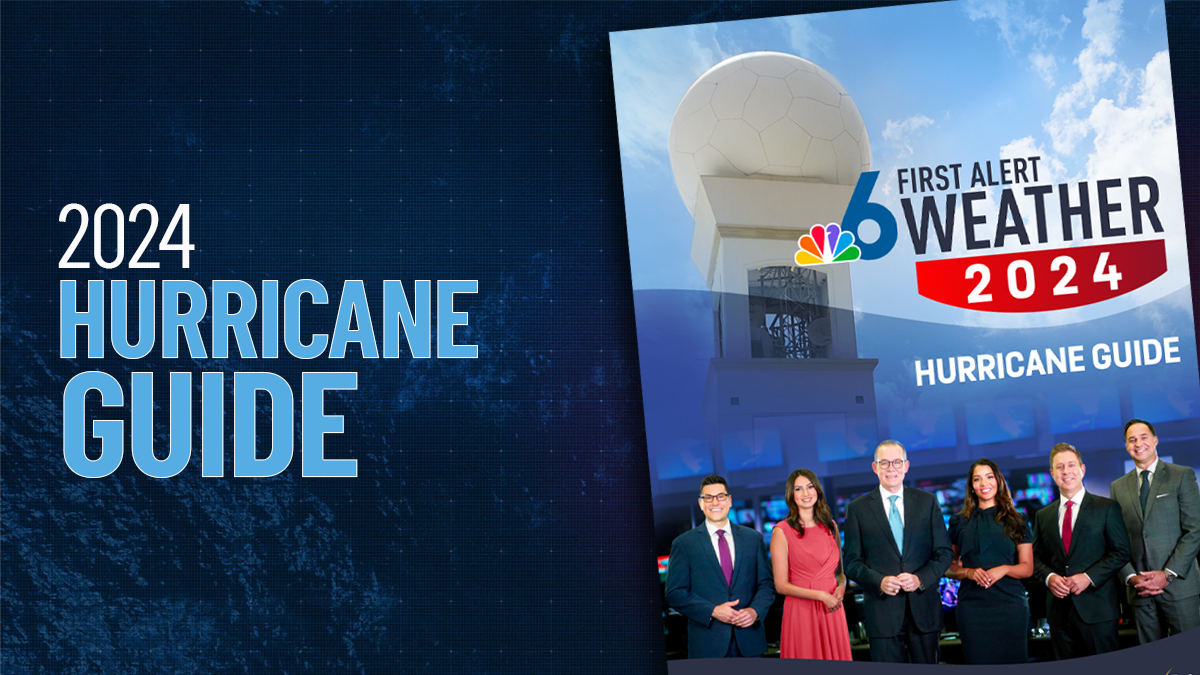Nearly three weeks of surprising calm in the Atlantic was suddenly broken by a slew of new tropical disturbances. On Friday, these easterly waves showed varying degrees of maturity.
The one with the highest chance of forming into a new tropical storm was the one with the least chance of hitting any land mass, located west of the Cabo Verde islands with a track pointing towards the wide open Atlantic.
Watch NBC6 free wherever you are
>There was a tropical wave midway between Africa and the Antilles with a medium chance of development. It too looks to track west-northwest, likely to miss the Caribbean islands and veer off into the northern Atlantic.
A third disturbance was flagged by the National Hurricane Center about 600 miles east of the Windward Islands. On Friday morning it only had a slight chance of forming into a tropical depression or storm. Regardless of development, this wave will likely produce some squalls across the West Indies this weekend and early next week.
Get local news you need to know to start your day with NBC 6's News Headlines newsletter.
>
Finally, there is a cluster of showers and thunderstorms in the eastern Bahamas linked to a low pressure system in the upper atmosphere that is moving towards the west. With time, that rotation could dig down towards the surface, with a chance that a tropical low pressure center or storm could form next week.
From a Florida perspective, the system could be a rainmaker this weekend. Thankfully, the development of a closed-off circulation at the surface, which is still far from certain, is not expected until the disturbance has passed the peninsula and moved west into the central Gulf of Mexico.
Hurricane Season
The NBC 6 First Alert Weather team guides you through hurricane season
From that point, the system would most likely move towards the Texas coast. Rain is desperately needed there because of an ongoing extreme to exceptional drought, which also extends into southwest Louisiana.
The quick pivot from an empty "tropical storm formation not anticipated" NHC map to one crowded with possible hurricane seedlings is having its moment on social media, with many expressing concerns. And rightfully so, given how most experts, including NOAA, are anticipating a hyperactive second half to the hurricane season.
The water continues to be much hotter than normal in the Atlantic, Caribbean and Gulf of Mexico. That fact alone is reason for concern, because everyone knows tropical storms feed off of warm waters. But over the next five days there is going to be an inordinate amount of wind shear in the Atlantic too, as seen in the Global Forecast System model forecast for average wind shear anomaly between Friday and Wednesday.

Those stronger westerly winds aloft, which help shear the head off of fledgling storms, are commonly seen during El Niño events. This year’s El Niño is in full swing and expected to last past this hurricane season and into the first few months of 2024.
There has been concern that the typical El Niño patterns, including wind shear, may not show up consistently enough over the Atlantic in the next few months. However, the shear is forecast to be strong for the next five days and will likely cap the development of the four systems being tracked in the Atlantic basin.
John Morales is NBC6's hurricane specialist.



